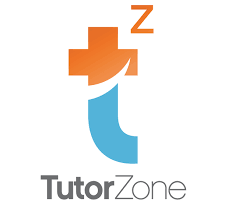Recently, we passed the one-year mark of the pandemic. The idea that it would take “two weeks to flatten the curve” serves almost as a comedic reminder that we had no idea what the future was going to bring.
Prominent research institutions like McKinsey & Company, think tanks, and nonprofit educational organizations have tracked student learning throughout the pandemic. They’ve identified key findings on the achievement gap, learning loss, and access to school resources. However, there has been pushback against measuring the academic impact of the pandemic on children. Responses to the pandemic have varied from state to state making it difficult to provide reliable data and produce learnings. These statistics also tend to favor certain demographic groups, leave critical environmental variables out of the picture, and run the risk of discouraging students from advancing.
How big of an influence has virtual schooling had on student learning? What inequities in public education have been worsened by the pandemic? What type of common sense solutions can be implemented moving forward to help students? These are things we will explore together. (We will focus on public school primary education in California. Explore the links at the bottom if you are interested in learning more about education at other levels and regions).
The Impact of Virtual Schooling
The beginning of the COVID-19 pandemic in America took on many different faces, but there is one familiar narrative: teachers, parents, students, and schools scrambling to move to remote instruction. Now, a year later, some students at the primary level have returned to full in-person instruction while others remain online or partake in a hybrid schedule.
Policy Analysis for California Education (PACE) has identified two key findings on student learning in Grades 4–10 in 18 school districts.
- There has been significant learning loss in both English Language Arts (ELA) and Math, with students in earlier grades most affected.
- The equity impact is severe—certain student groups, especially low-income students and English language learners (ELLs), are falling behind more compared to others.
The amount of learning loss during school closures depends on access to remote learning, the quality of remote instruction, home support, and the degree of engagement. The pandemic has forced the most vulnerable students into learning situations with inadequate tools and support systems to navigate them. TIME magazine notes that, “For months, the consensus that most students are better served academically and socially by in-person learning has run up against concerns that reopening schools would lead to further transmission of the virus, putting teachers and other school employees, in particular, at risk.”
Access to School Resources
In the American public education system, disparities in school resources have always fallen along racial and socioeconomic lines. Cornell University professor Noliwe Rooks, the author of “Cutting School: The Segronomics of American Education,” believes that the pandemic has not only revealed these racial inequities but is actively reproducing them.
Politico breaks down this pattern of systematic disenfranchisement: “Unequal funding at the state and local levels maintain well-resourced schools in mostly white neighborhoods while those serving mostly Black, Latino and low-income white students struggle to finance basic supplies. While not all low-income schools are predominantly Black or Latino, students of color are overrepresented in underserved school populations.”
How and when schools receive funding at the local, state, and federal level remains a nebulous and controversial process that often pits school districts, their unions, and the government against each other in a politicized deadlock. The bottom line is that these disputes have come at the expense of valuable learning, particularly for non-white and low-income students.
Combatting COVID-19 Learning Loss
The switch to virtual schooling has undoubtedly led to decreased quality and quantity of instruction. But are the effects of learning loss permanent? The research is inconclusive. Some students have struggled to keep afloat with distance learning while others have been able to maintain a semblance of a routine online and make solid progress in all subjects. In all cases, what happens next to students in the short-term is critical.
Studies have consistently shown that tutoring combats learning loss and educational inequities. Although not all tutoring programs are created equal, remote tutoring generally leads to positive learning outcomes and younger students reap the most benefits. Tutoring interventions during school hours often result in the greatest student improvement, though scaling up tutoring and extra support in all forms is a safe bet (Econofact).
The World & Community as Educators
The pandemic has cracked wide open the debate over what it means to genuinely center student well-being and student success. One thing that has not been widely discussed in this article is the rise of technology in education, and the ways in which technology will continue to shape how we view classroom learning.
Newsela asked students to write about their experiences of the pandemic. Willow P., a seventh grader at Impact Academy in Hayward, California, shared her story. “Cities and countries have learned that the most important part about this pandemic is trying to stay together while apart. I think during this process humanity has created more empathy and kindness.” The classroom is an irreplaceable space for learning, one that should not be taken for granted again. However, throughout this past year, in the midst of overlapping crises in politics and health, children have learned a lot about how society works, and hopefully the importance of caring for others, especially in times of need.
by Elena D.
Sources:
https://time.com/5918769/coronavirus-schools-learning-loss/
https://www.eschoolnews.com/2021/03/05/has-the-pandemic-widened-the-achievement-gap/
https://edpolicyinca.org/newsroom/covid-19-and-educational-equity-crisis
https://econofact.org/tutoring-to-combat-covid-19-learning-loss

